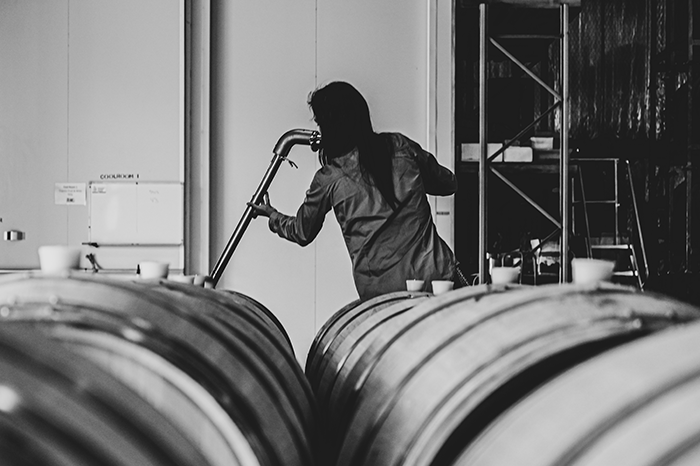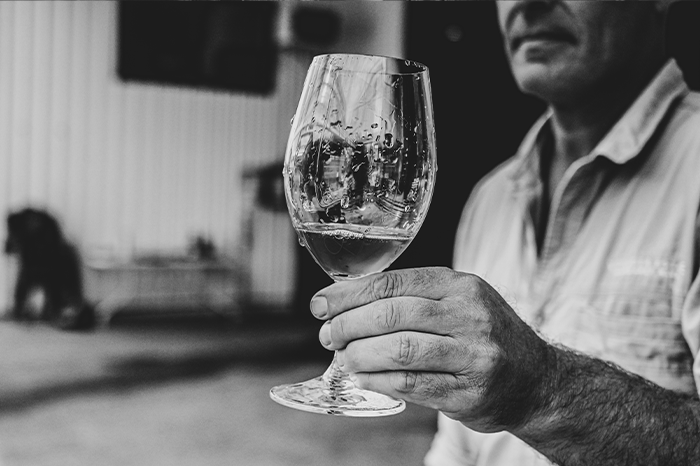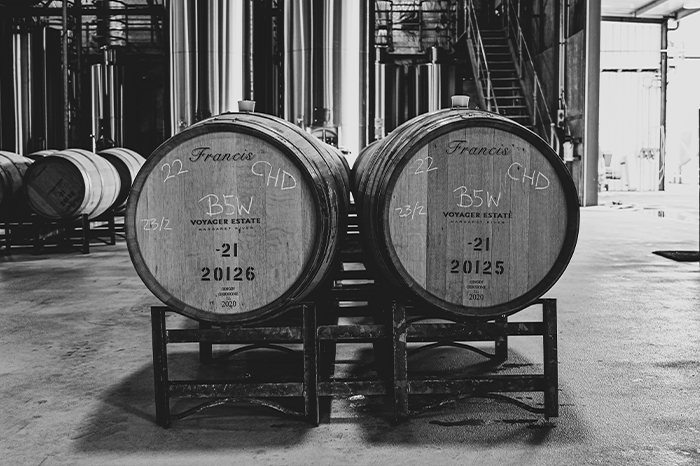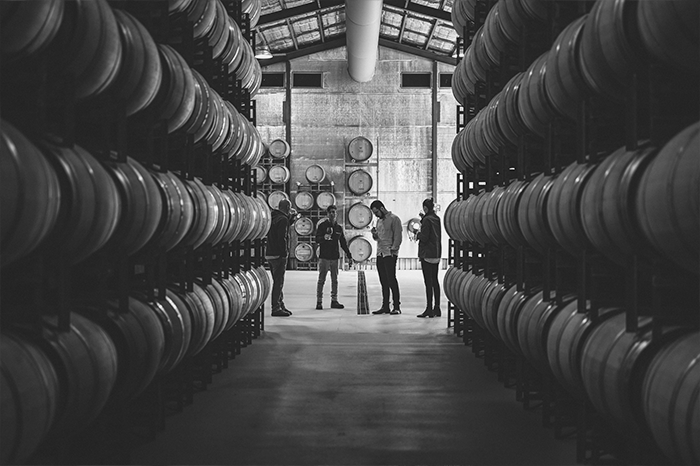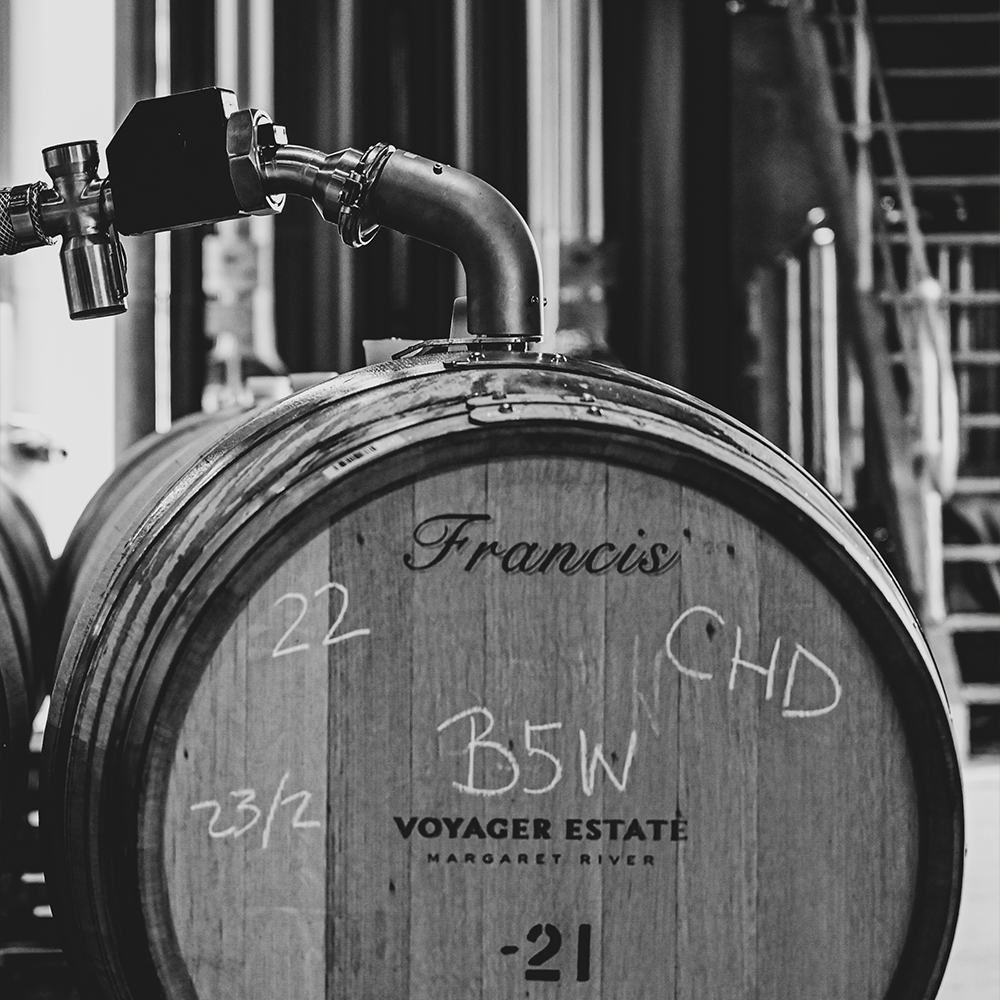OAK & VINE
Throughout history, the oak barrel was mostly used for practical purposes, transporting wine from one place to another. Somewhere along the journey, a discovery was made – the barrels were imparting flavours and characters into the liquid gold sloshing around inside. Fast forward to today and we have modern winemaking, with oak barrel selection an often critical component of the craft.
At Voyager Estate, we maintain a select core team of sustainably farmed oak suppliers and barrel coopers who we work with regularly, but we are always experimenting with the different variables – forest selection of oak, stave seasoning and barrel toasting profiles – to ensure a constantly evolving program.
Winemaker and Winery Manager, Travis Lemm, is incredibly passionate about curating the right oak profile for each of our wines. “Oak, like wine, is sourced from specific land with its own unique micro-climate, weather variation, and soil – meaning it is an expression of place that can impart different characters. We work with a complex combination of oak and toasting levels to impart just the right amount of influence, without overpowering our pristine fruit."
There is no better example of where this process comes into play than with our prized Chardonnay blocks. The team works to match the oak to the different Chardonnay clones grown on the Estate, each with their own unique characteristics, to craft our expressive cuvees.
“The classic Margaret River Gin Gin clone always has powerful fruit, tight acidity, and great length, so we select oak that is seasoned and toasted to support these attributes – for example, we like to accentuate that length and keep those pristine fruit flavours at the front of the palate. The barrel also provides mid-palate richness," says Travis. “Clone 95 is a different prospect. It can be a little more subtle and citrus-toned, and, as we often utilise malolactic fermentation to soften the natural acidity, we are looking for oak that provides length and richness, rather than upfront oak flavour that may dominate the delicacy of the wine.”
Cabernet also has an array of fruit characters and tannin profiles that should be supported, not dominated, by oak. Different Cabernet expressions often require a variation in choice of oak, from the grain size of the timber, to stave thickness and toast levels.
This complex process of ‘match-making’ often involves working directly with coopers to develop barrels to suit the specific blocks. Coopers are masters of their craft and know how to achieve a particular style from their own oak selections when making barrels. This allows consistency of expression from year to year, which is an important factor for winemakers, as it helps mitigate the differences in wine style that can come from seasonal climate variance.
“We develop close working relationships with our coopers over time, to refine the style of oak used as our vineyards age and the subtleties of the season add to our knowledge base," Travis continues. “Wines may be matured in barrel for a few months or even years, so the choice of oak is critical. As organically certified growers and makers of wine, we do not add fining agents, thus we only work with high quality materials. We cannot have any 'sharp' edges or rough tannin profiles imparted to the wine, that may take away from its sense of place.”
